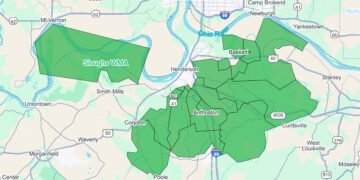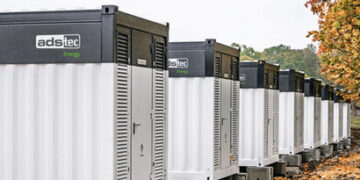The possibility of two new battery energy storage systems coming to Henderson—one in the city and one in the county—has hastened the creation of a local zoning ordinance for the new technology which, according to officials, would be the first of its kind in the commonwealth.
Henderson City Attorney Dawn Kelsey presented a plan Tuesday at the city commission meeting that she says meets national standards for battery storage systems. She said city officials working on the proposed ordinance consulted approved plans from numerous states, including Massachusetts, New York and California.
The plan includes two tiers. Tier 1 sets out parameters for smaller energy systems that store less than 600kWH.
Read more: Local officials grapple with battery systems ordinance, some installations nationwide have caught fireTier 2 gives the requirements for larger installations, which according to the current draft ordinance, would only be allowed in areas zoned heavy industrial. These Tier 2 areas hold more than 600kWH.
In the process of drafting the ordinance, fire department officials learned that battery storage areas in other municipalities across the country had caught fire, some massive. They are called thermal runaway events and are caused by chemical reactions inside the lithium batteries, said Matt Anderson, division chief for the Henderson Fire Department. Anderson said there is also the potential for explosions within the battery holding compartments.
Officials say that’s one reason that the draft ordinance requires Tier 2 installations to be in heavy industrial sites—there aren’t many heavy industrial sites located within city limits and they aren’t close to residential areas.
Brad Bickett, the general manager for Henderson Municipal Power and Light, said that the utility has put out requests for proposals for a battery storage installation near Substation #7 located on South Green Street. He said the battery technology that HMP&L is requesting is safer than those installations where thermal runaway events have occurred.
He also said he believes the Tier 2’s zoning as heavy industrial is not appropriate. He believes the correct zoning should be light industrial, which would fit in with current plans to bring battery storage to the city.
Bickett said the Substation #7 area is currently zoned for general business but would need to be re-zoned appropriately before the battery installation could locate there, as would other possible locations.
Bickett will meet with city and planning officials Monday morning to discuss zoning for these areas, he said.
The draft ordinance also includes numerous provisions for meeting building, electrical, mechanical and fire codes. A report detailing how the installation meets fire standards must be submitted to the fire chief and approved before a permit can be issued, said the draft ordinance.
The draft ordinance also includes specific screening requirements, such as a 7-foot-tall fence, which is required to reduce noise and hide the installation.
There is also a requirement that would ensure that the battery company has bonding in place to take care of decommissioning once the project is no longer in operation. Additionally, a bond must be in place before any permits would be issued for a project.
Kelsey said an additional provision for decommissioning in the event of a catastrophic failure will be added.
Kelsey said she contacted the Kentucky League of Cities which informed her that it is not aware of any other city in the state that has a battery storage system zoning ordinance.
Brian Bishop, the executive director of the Henderson City-County Joint Planning Commission, said he’s also not aware of any battery storage ordinances in the state, part of the reason officials had to refer to standards in other states.
“Whether we like it or not, we’re plowing new ground,” he said.
The public will have the ability to comment on the ordinance at the next planning commission meeting on Nov. 7, Bishop said.
On a side note, Bickett said HMP&L has also put out a request for proposals for a 35-acre solar farm on city-owned land on Borax Drive. It would produce 5 MW of energy, he said.





















